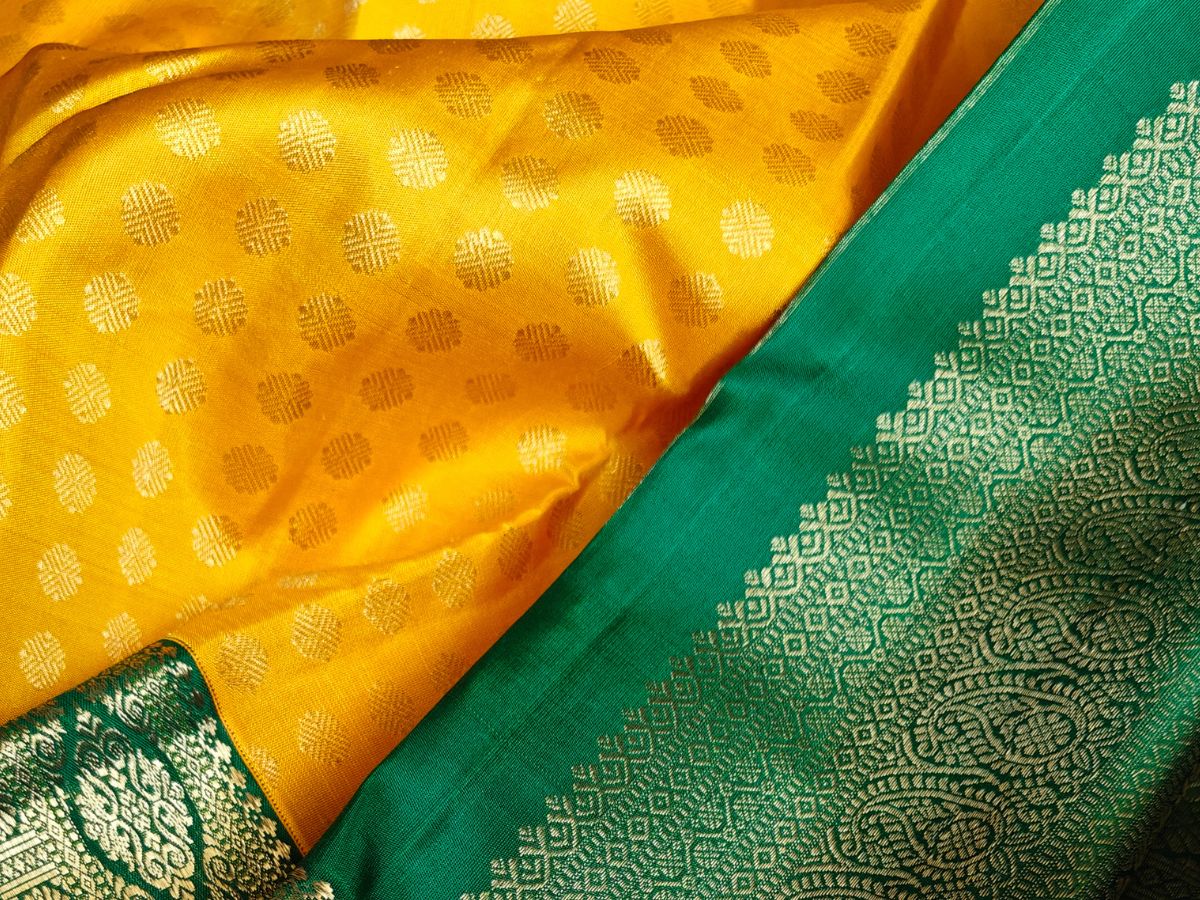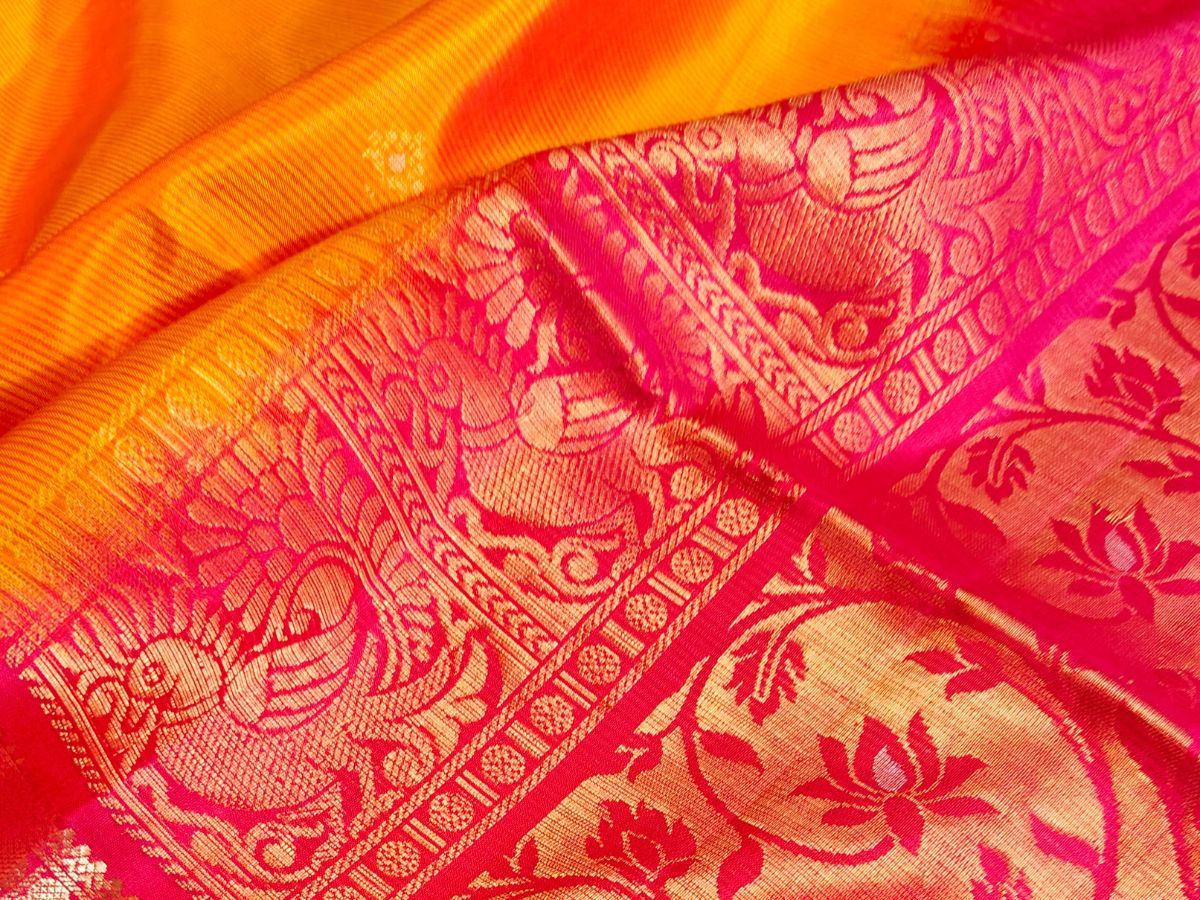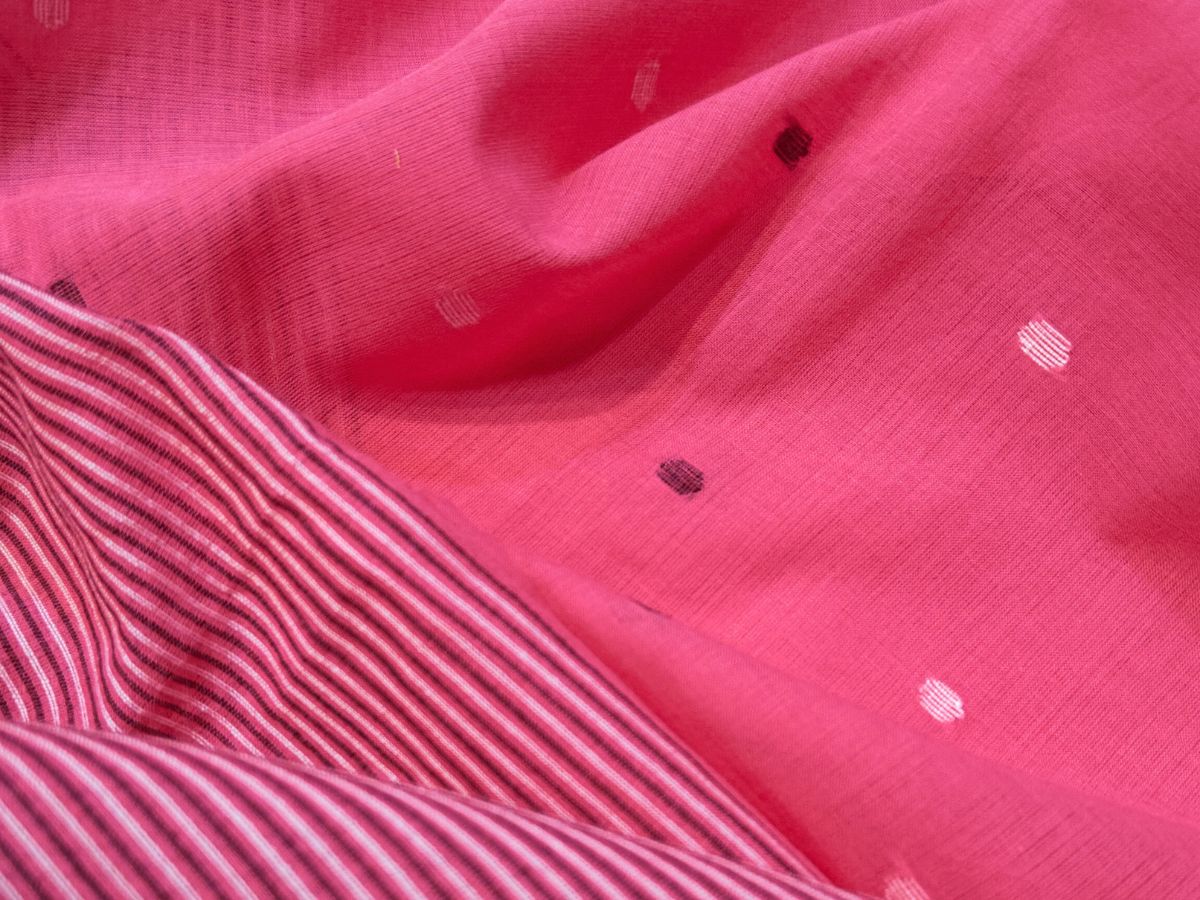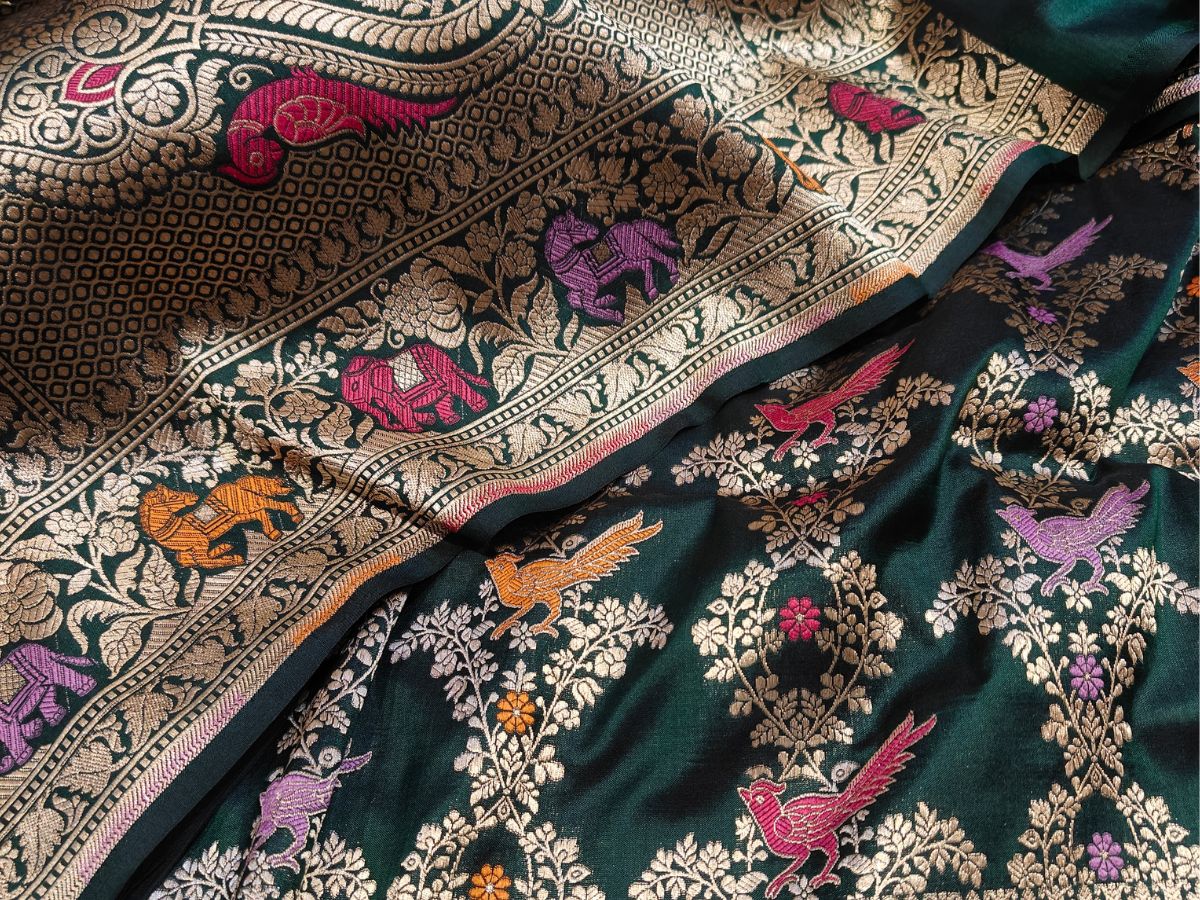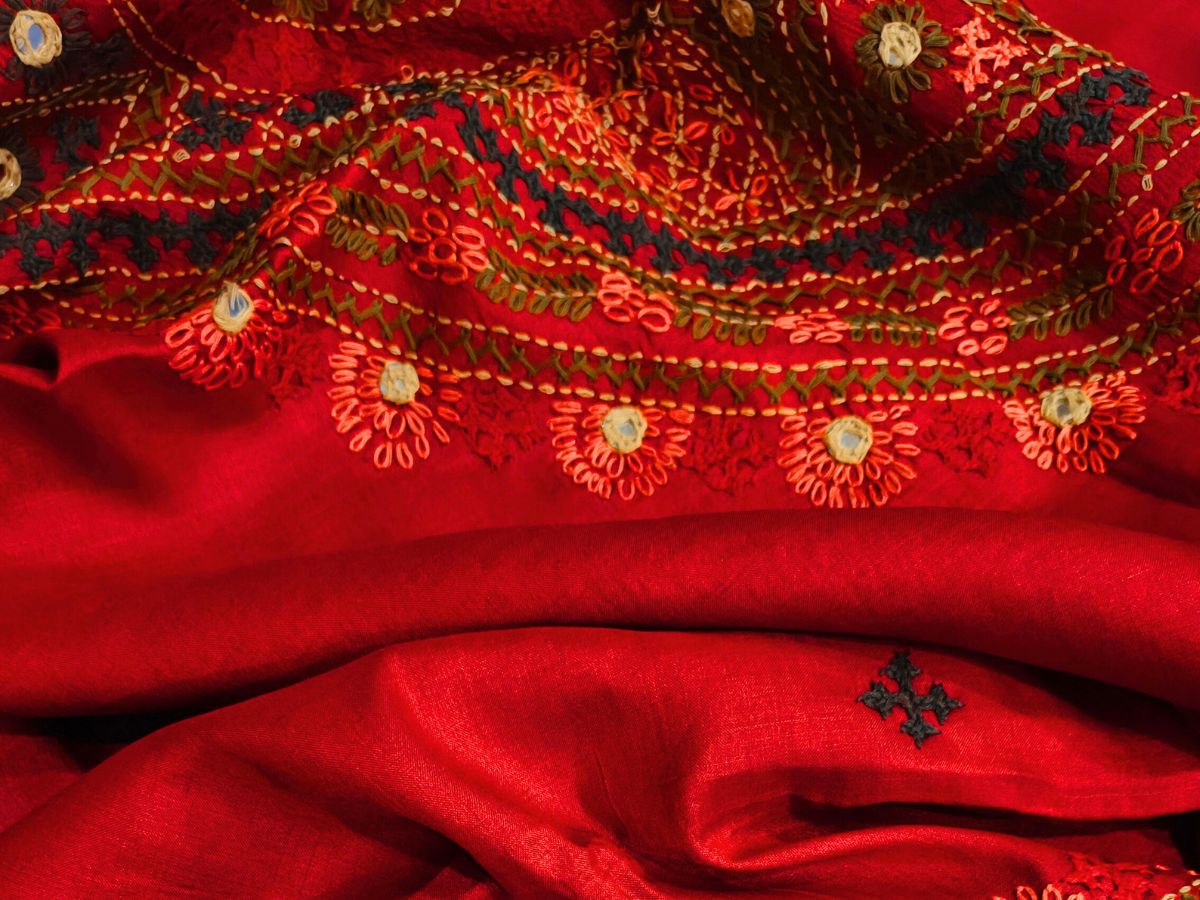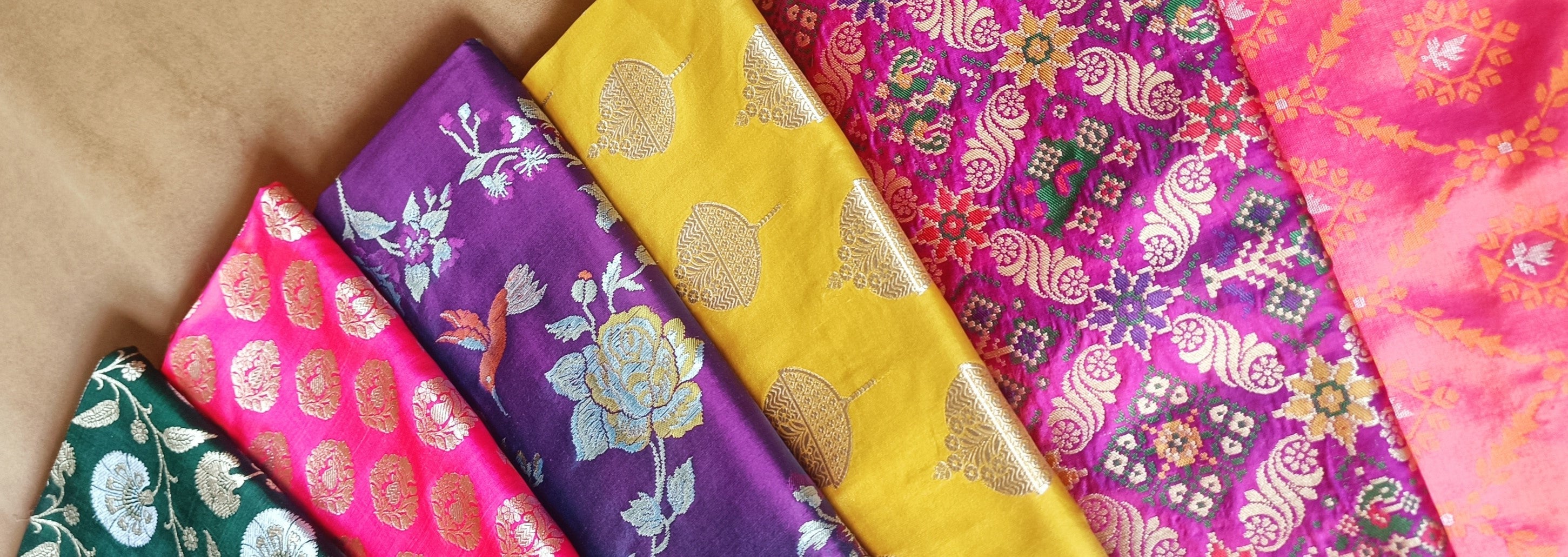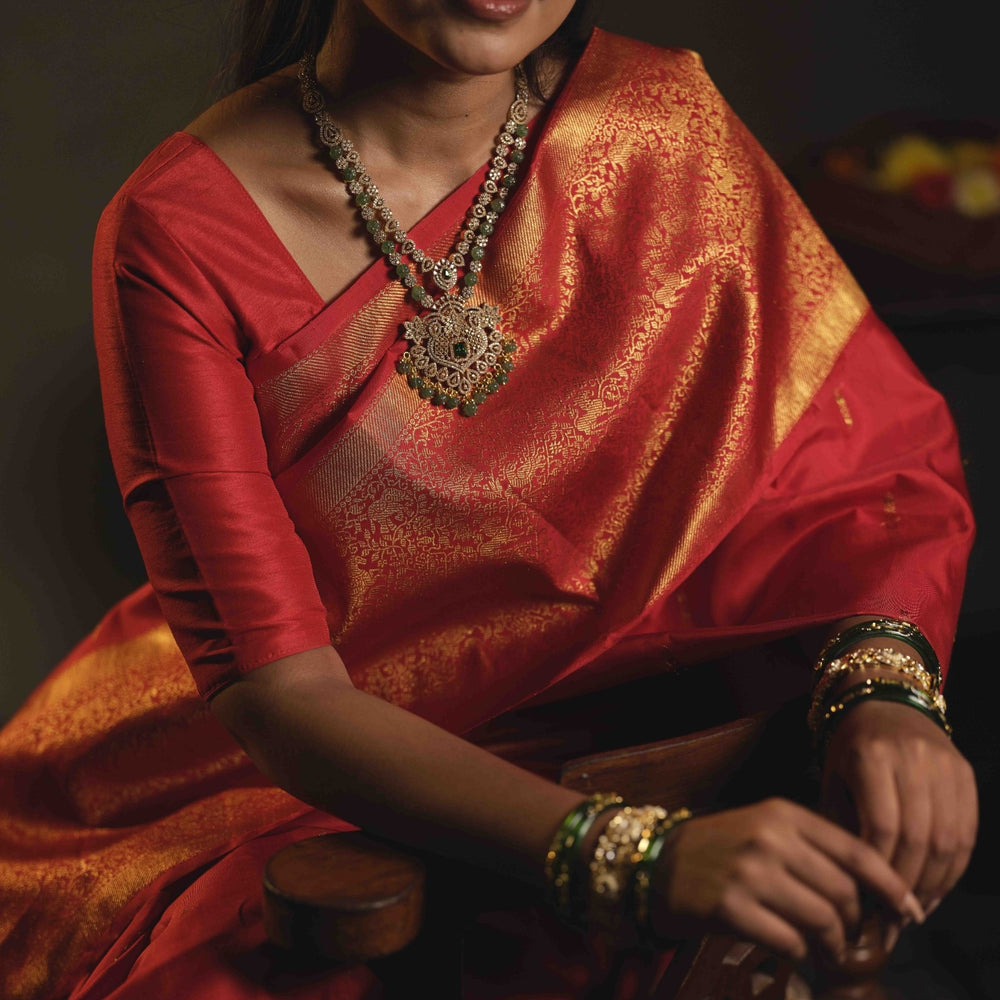Wearing a Landscape: How Indian Crafts Reflect Geography
When you drape a saree, you don’t just wear six yards of fabric—you wear a landscape, a culture, and a history. Every motif, every colour, every thread speaks of a land where it was born. At Dakshinam Sarees, our journeys across weaving clusters have revealed that India’s handlooms are not just garments; they are living maps of the subcontinent.
The Geography in Your Saree
Travel to the lush green deltas of Tamil Nadu, and you’ll find the majestic Kanjivaram saree—its shimmering silk reflecting the temple culture and grandeur of Kanchipuram. Move north to the ghats of Varanasi, and the Banarasi saree whispers tales of Ganga’s eternal flow, adorned with intricate zari patterns that mimic Mughal gardens. In the windswept plains of Gujarat, the vibrant Patola saree mirrors the arid land in its striking geometric ikats.
These are not coincidences. Sarees inspired by Indian geography are a centuries-old tradition. The raw materials, the dyes, the motifs—all arise from the land. The mango motifs in Kanchipuram silks, for example, come from the orchards of the South, while the fish patterns in Bengal’s Baluchari sarees echo its riverine culture. This is why wearing a saree is often like wearing a region’s soul.
The Craftsmanship: Weaving Traditions Across India
The diversity of Indian textiles is staggering. There are over 30 regional sarees that dominate India’s cultural map, each with its own weaving philosophy:
-
Kanjivaram (Tamil Nadu) – Famous for its bold borders and temple-inspired motifs.
-
Banarasi (Uttar Pradesh) – Known for luxurious silk and gold brocade.
-
Chanderi (Madhya Pradesh) – Lightweight elegance with sheer texture and delicate motifs.
-
Bandhani (Gujarat and Rajasthan) – Tie-dye art that reflects the desert hues.
-
Kasavu (Kerala) – White and gold, minimal yet regal, inspired by Kerala’s purity.
-
Pochampally Ikat (Telangana) – Geometric brilliance in precise tie-and-dye weaves.






Each piece of these famous handloom sarees from Indian states represents not just the craft, but the ecosystem that sustains it—the rivers that dye the yarn, the looms that creak in courtyard workshops, and the communities that guard their legacy.
Working with Weavers: Why These Pieces Are Precious
When we at Dakshinam visit weaving clusters, we witness more than the rhythmic click-clack of the loom—we see dedication passed down through generations. Every motif is a story, every saree is months of labour.
Take the making of a Kanjivaram saree: the warp and weft are woven separately and then interlocked with a precision that has been perfected for centuries. Or a Banarasi saree, where artisans painstakingly insert metallic threads to create motifs that shimmer like poetry. These are not just garments; they are heritage heirlooms, each carrying a weaver’s soul.
Sadly, many of these crafts were on the brink of extinction due to industrialization and fast fashion. But in recent years, something has changed.
The Revival: Bollywood & Craft Evangelists Step In
Enter the world of Bollywood, where sarees are more than costumes—they are statements. When Deepika Padukone walked the red carpet in a regal Kanjivaram, or Vidya Balan embraced the elegance of handloom silks, the nation took notice. Designers and stylists like Sabyasachi Mukherjee and Ritu Kumar championed the revival of forgotten weaves, making them aspirational again.
Beyond fashion weeks, craft evangelists and influencers have played a huge role in this revival. Platforms like #IWearHandloom, initiated by Indian government bodies, brought back pride in weaving traditions. Today, millennials and Gen Z are draping Balucharis, Jamdanis, and Chanderis—not as nostalgia pieces, but as fashion-forward choices.
Storytelling through Indian handloom sarees has become the new luxury. Owning a saree today is about knowing its origin, respecting its craft, and flaunting its story.



Sarees From Kanchipuram to Banaras: The Modern Interpretation
While rooted in tradition, these sarees are evolving for contemporary lifestyles. Weavers and brands like Dakshinam experiment with lighter silks, muted palettes, and fusion borders so that regional sarees can move from festive wardrobes to workwear and destination weddings. Imagine a Kanjivaram with an organza-like drape, or a Banarasi with minimal zari for everyday elegance—that’s the future of Indian handlooms.
Styling Tips: Wearing a Landscape With Grace
-
Pairing Tradition with Modernity – Drape a Kanjivaram with an off-shoulder blouse or a Banarasi with a crisp shirt for a chic twist.
-
Accessorize Thoughtfully – Antique temple jewellery for South silks, meenakari for Rajasthani Bandhani, and oxidized silver for Bengal cottons.
-
Colours That Speak Geography – Pick shades that represent their land: earthy browns for Chanderi, ivory for Kasavu, jewel tones for Kanjivarams.
-
Experiment With Drapes – Try the Gujarati pallu for a Patola or the Nivi style for a Jamdani to celebrate their heritage.
Why Owning a Handloom is a Legacy
When you invest in an Indian handloom saree, you are investing in a heritage that sustains artisan families, supports rural economies, and keeps our cultural geography alive. It is the most sustainable form of luxury fashion—timeless, versatile, and deeply personal.
At Dakshinam, we bring these regional sarees from Kanchipuram to Banaras under one roof, curating collections that speak of India’s diverse landscapes and weaving traditions. Whether you seek a Kasavu for Onam, a Banarasi for your wedding, or a Kanjivaram that feels like heirloom art, we help you wear India’s geography with pride.
Explore our latest handloom saree collection in Chennai, Kanpur, Jaipur, and Lucknow—or shop online. Because every saree tells a story, and it begins with the land beneath our feet.


